
Whether you are a brand new finance professional or looking to brush up on your skills, there are countless FP&A books out there that you can read. The question becomes, which ones are worth reading?
The field of FP&A is an ever-changing, dynamic landscape. To help finance professionals stay ahead of the curve, it’s important to have a solid understanding of financial analysis methods and processes.
The Top 11 FP&A Books
Therefore, we’ve compiled a list of recommended FP&A books for 2025. Read on to discover 11 books to help you unlock the raw, untapped power and potential of financial reporting.
1. Financial Planning & Analysis and Performance Management
Author: Jack Alexander
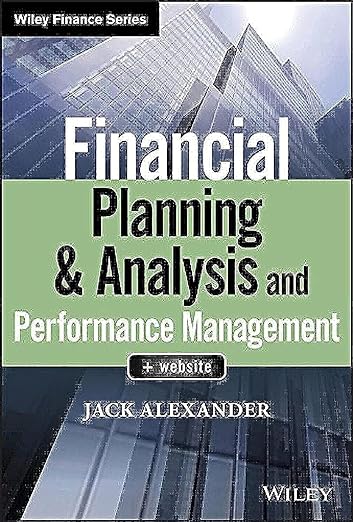
Jack Alexander is a celebrated author and an experienced CFO and business consultant. Jack offers a practical guide in this five-part book that helps professionals bridge the gap between performance and planning.
The author calls upon his extensive expertise as a CFO and business consultant to create a phenomenal reference manual for FP&A analysts and Investor Relations teams.
As far as financial planning and analysis books go, this is among the best. Its wide assortment of topics ranges from the basic best FP&A practices and critical tools to more advanced topics, such as dealing with uncertainty and risk.
This book also has the unique feature of having a companion website that emphasizes the importance of selecting appropriate financial dashboards and measures. It does this by using illustrative performance dashboards and Excel models as working examples and starting points for the reader.
The Excel examples used in the books have accompanying spreadsheets on the website that enable readers to fully comprehend the worksheet analysis’s context, objectives, and logic.
- Where to buy the book: Amazon
- Price: $71.99 (Occasional sale prices as low as $32.30)
2. Financial Management: Partner in Driving Performance and Value
Author: Jack Alexander

In Financial Management: Partner in Driving Performance and Value, Jack Alexander builds on the foundation of his previous FP&A work.
It delivers a wealth of knowledge tailored to finance professionals seeking to refine their strategies, improve planning, and align finance with business goals.
This book is full of insights drawn from Alexander’s 45-year career in financial leadership. It offers tools, frameworks, and strategies for improving performance and creating shareholder value.
Designed for CFOs, controllers, FP&A professionals, and financial leaders, the book delves into best practices and original insights on:
- Scenario Analysis and Planning
- Strategic Planning and Analysis for Finance
- Leveraging and Promoting Technology
- Business Partner: Key Partner Capabilities
- HCM and Building a High-Performance Finance Team
- Finance Role in Supporting Growth
- Monitoring External Forces
- Business Restructuring & Transformations
- Business Agility and Adaptability
- Financing and Capital Structure
Where to buy the book: Amazon
Price: $48
3. Financial Planning and Analysis with SAP: SAP solutions for EPM
Author: Malcolm J. Faulkner and William D. Newman
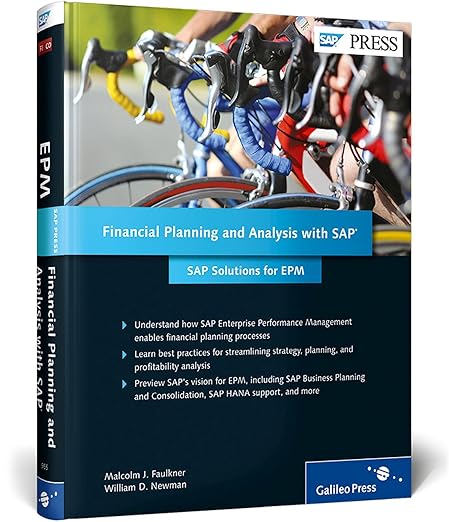
Financial Planning and Analysis with SAP is the ultimate FP&A guide for professionals who desire to develop and execute a fully optimized EPM process and strategy.
This book’s content, which covers topics ranging from strategic planning through integration to SAP requirements for its successful application in EPM, has made the business path a little easier to navigate.
It extensively explores the concept of EPM, trying to help the reader understand how SAP EPM can be leveraged with other solutions while expanding its flexibility and effectiveness.
As expert consultants and SAP insiders, Faulkner and Newman provide an insider’s view into the technical configuration of FP&A and EPM processes, focusing on the strategic utilization of SAP for EPM solutions.
The book helps you discover how EPM can help manage your organization’s FP&A processes.
It also introduces readers to SAP Business Planning and Consolidation, the most influential SAP applications for budgeting and planning in EPM. Professional financial analysts can use the book to guide the company’s strategic journey.
It provides a process of laying out the plans and execution elements companies should take to help them attain financial stability.
Although the book is several years old, the lessons and applications are still relevant today.
- Where to buy the book: Amazon or SAP Press.
- Price: $69.99 to $79.95 depending on the site and whether in ebook or print
4. Financial Analysis, Planning, and Forecasting: Theory and Application (Third Edition)
Author: Cheng F. Lee and John Lee.

Financial Analysis, Planning, and Forecasting: Theory and Application is a five-part book that introduces FP&A and forecasting for beginners.
Drawing on Professor Cheng-Few Lee’s extensive business experience, teaching, and research, this guide helps the reader understand and integrate both practical and theoretical aspects of financial planning and forecasting.
The five parts covered in the book are:
- Information and Methodology of Financial Analysis
- Alternate Finance Theories and Cost of Capital
- Capital Budgeting and Leasing Decisions
- Corporate Policies and their inter-relationships
- Financial Planning and Forecasting
These five parts carefully analyze the inter-relationships between the distinct theories in FP&A by using real-world examples to discuss the ideas in depth, using relevant methodology and data.
Among the topics discussed in this publication are the fundamental concepts of financial analysis and planning, using financial management as a background for discussing financial analysis and planning.
With new chapters added and other chapters combined in the third edition, the subject matter has been extensively expanded and updated to accommodate and keep up with the business world’s digital migration, thus providing a holistic view of the subject.
However, the integrity of the authors’ wisdom remains despite the book featuring brand-new updates and extra modern takes on the concept. This has earned it a place in the list of one of the top FP&A books.
Where to buy the book: E-books.com or Amazon
Price: $43.99 – $145 depending on Kindle or Hardcover.
5. Corporate Financial Analysis: Simple Methods and Strategies to Financial Analysis Mastering
Author: Blaine Robertson
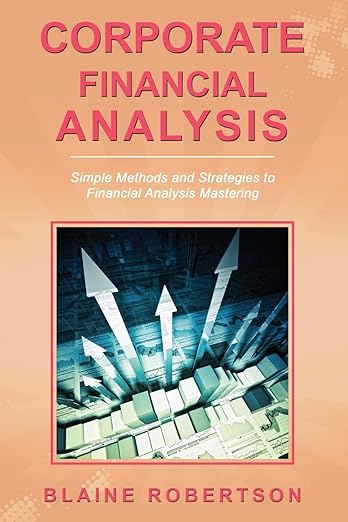
This book will enable its readers to understand the intricate and surprisingly simple concept of Corporate Financial Analysis to correctly judge whether or not their company is financially sound.
With several finance and investment-related books under his belt, Robertson has proven to be an expert in the financial department. He imparts his wealth of knowledge to both professionals and beginners.
This FP&A book comes when the need for financial analysis has grown exponentially in the current digital world.
Businesses, especially small businesses, need to weigh the effects of certain financial decisions, such as borrowing on their businesses. This book covers financial analysis, which gives business owners the tools to evaluate their company’s financial information.
But it’s not only for business owners or finance experts. It also equips potential investors with the necessary information to form opinions about the company’s investment value and expectations for future performance.
Where to buy the book: Amazon
Price: $130.00
6. Corporate Financial Analysis: 3-in-1 Comprehensive Beginner’s Guide Simple Methods and Strategies + Advanced Methods and Techniques for Analysis of Financial Statements, Reports and Markets
Author: Blaine Robertson
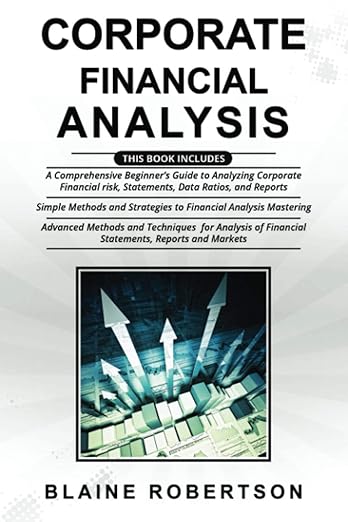
This beginner guidebook provides various information regarding the strategies and methodologies employed in corporate financial analysis to create a financially sound organization.
Blaine Robertson is the same author who wrote Corporate Financial Analysis: Simple Methods and Strategies to Financial Analysis Mastering, combining several of his works into this masterpiece.
This book covers corporate financial analysis, extensively breaking down the steps step-by-step to simplify them so that beginners can easily understand them.
This book answers some of the questions that business owners usually ask themselves. It provides true learning by equipping its readers with enough knowledge to practice what they have learned and apply it to real-life situations.
The book also teaches the readers the basic concepts of corporate financial analysis.
This book is versatile. Its content can also guide the practice of professional financial analysts. It’s available in paperback and ebook versions that people can read on any device.
Where to buy the book: Thriftbooks or Amazon.
Price: $43.49 to $221 depending on condition and format.
7. Using Excel for Business Analysis: A Guide to Financial Modelling Fundamentals + Website
Author: Danielle Stein Fairhurst

Danielle Stein Fairhurst channels her expertise and experience as a financial analyst to bring to life this comprehensive guide to financial modeling, suitable for beginners’ intermediaries and professional analysts.
Readers of the book will benefit from the author’s talent for financial modeling, which will help them create meaningful financial models in the form of pricing models, business cases, and management reports they can use to draft and craft proposals and financial reports.
The book contains financial modeling concepts and practicalities for performing complex Excel analyses.
The modern business world relies heavily on technology and real-time data and information to keep financial forecasting ahead of the competition.
The book profoundly exploits Excel functionality to enable financial practitioners to craft a compelling financial model that provides accurate information for sound financial decision-making.
The author opens the book with a general guide to financial modeling, building skill upon skill in each subsequent chapter, leading to an actual working model.
The book thoroughly covers the features, functions, and financial tools from a practical perspective, highlighting their application in a real-world situation using relevant examples.
Financial modeling using Excel and its different aspects, including step-by-step instructions, is also covered.
The companion website is a nice bonus as it provides the readers with live model worksheets that give them hands-on experience, helping them implement what they learned immediately.
Where to buy the book: Amazon or Wiley.
Price: $45.99 – $48.99
8. Mastering Financial Modelling in Microsoft Excel: A Practitioner’s Guide to Applied Corporate Finance – 2nd Edition
Author: Alastair L. Day
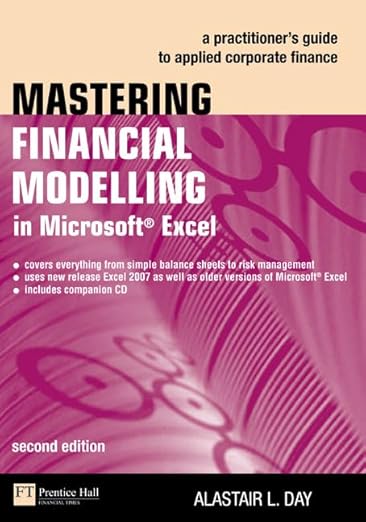
Mastering Financial Modeling in Excel is more than a guide to Excel, as unlimited courses, guides, and books exist. Rather, it helps readers understand how to use Excel to make decisions.
Day teaches everything you need to know about financial models by showing how to use complex spreadsheets and advanced analysis tools for anyone – no matter their skill set.
While many guides and books show how to use Excel, this one will turn it into a career changer by providing real-world examples and practical exercises.
This book is part of Alastair Day’s Mastering Series, which aims to ensure you master everything practical about Excel.
Where to buy the book: Amazon
Price: $13.42 – $16.96
9. Future Ready: How to Master Business Forecasting
Author: Steve Morelidge and Steve Player
Business forecasting is a cornerstone of organizational planning, yet many forecasting processes fall short of their potential.
Future Ready: How to Master Business Forecasting by Steve Morlidge and Steve Player redefines how businesses think about forecasting, offering actionable strategies to prepare for an uncertain future.
Drawing on decades of experience, the authors present a straightforward and practical approach to helping organizations improve forecasting processes.
While accurately predicting the future is impossible, they underline that firms may develop trustworthy, flexible predictions that drive important choices.
The books will help readers answer questions like:
- How should a forecast be used?
- How do you ensure that your forecast is reliable?
- How accurate does it need to be?
- How should you deal with risk and uncertainty
- What is the best way to organize a forecast process?
Where to buy the book: Amazon
Price: $16.91 – $28.31
10. The CFO Lens: How to Thrive in the Fast-Changing World of Finance
Author: R. Ravikumar
Finance professionals today face an unpredictable environment filled with unique challenges and opportunities.
The CFO Lens: How to Thrive in the Fast-Changing World of Finance by R. Ravikumar offers a practical guide to thriving in these changes. Designed for experienced CFOs and aspiring leaders, it bridges the gap between theory and actionable insights.
Based on feedback from CEOs and eight CFOs from well-known companies, the book provides an intriguing narrative replete with real-life examples, stories, and best practices.
It is an excellent resource for those who want to improve their decision-making abilities and increase their business influence.
Where to buy the book: Amazon
Price: $10
11. All About FP&A
Author: Asif Masani
All About FP&A by Asif Masani offers a practical and accessible introduction to the world of FP&A. It’s a helpful starting point for beginners and aspiring professionals.
Designed to simplify complex financial concepts, the book provides a step-by-step guide to:
- Budgeting
- Forecasting
- Reporting
Readers are guided through core financial concepts, including preparing cash flow statements, understanding balance sheets, and creating financial models.
The fundamentals of budgeting are explored in depth alongside seven common approaches to the process.
Where to buy the book: Amazon
Price: $16.48
Conclusion
The importance of financial planning and analysis cannot be stressed enough in the modern business world. And while there are numerous financial analysis books out there that help professional analysts build upon their FP&A knowledge, there are many more that can simplify the subject and are highly recommended for beginners.
You can apply the theoretical aspects of FP&A found in these books to real-world situations, enabling you to leverage insights or metrics to make significant improvements in your company. And in return, allowing your company to thrive and prosper.